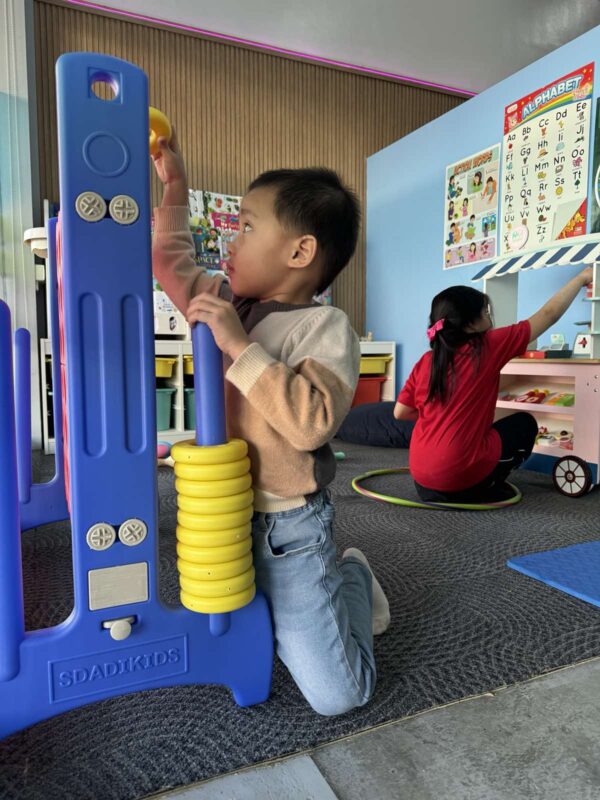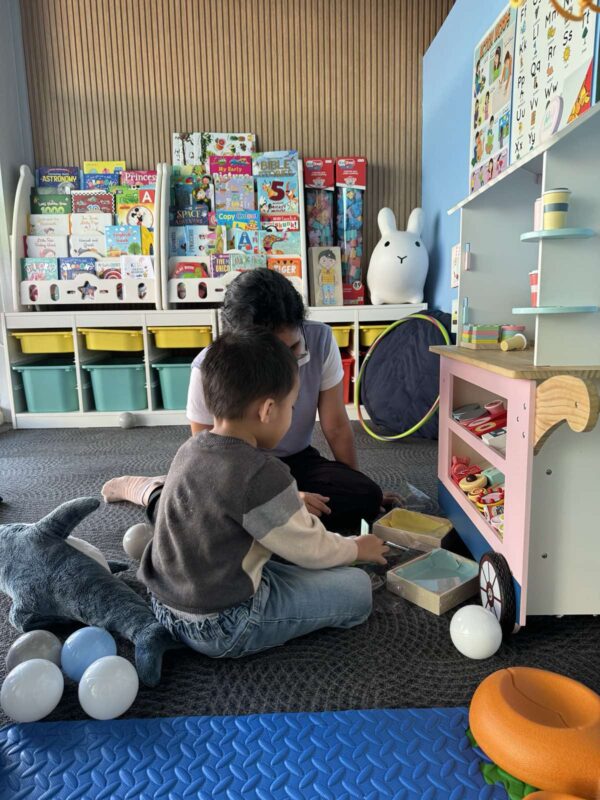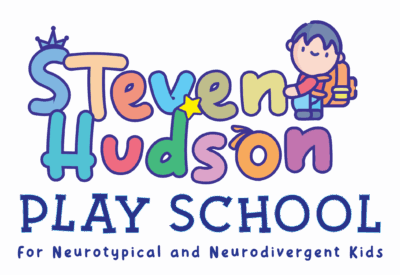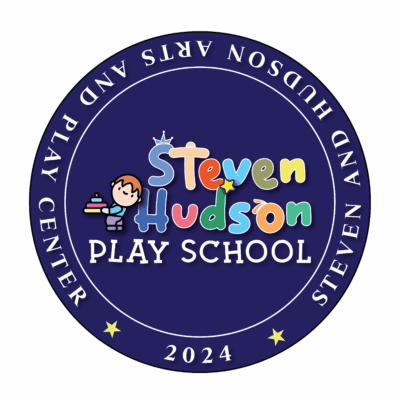Children need to develop a variety of skill sets to optimize their development and manage toxic stress. Research demonstrates that developmentally appropriate play with parents and peers is a singular opportunity to promote the social-emotional, cognitive, language, and self-regulation skills that build executive function and a prosocial brain. Furthermore, play supports the formation of the safe, stable, and nurturing relationships with all caregivers that children need to thrive.
Play is not frivolous: it enhances brain structure and function and promotes executive function (ie, the process of learning, rather than the content), which allow us to pursue goals and ignore distractions.
When play and safe, stable, nurturing relationships are missing in a child’s life, toxic stress can disrupt the development of executive function and the learning of prosocial behavior; in the presence of childhood adversity, play becomes even more important. The mutual joy and shared communication and attunement (harmonious serve and return interactions) that parents and children can experience during play regulate the body’s stress response. This clinical report provides pediatric providers with the information they need to promote the benefits of play and and to write a prescription for play at well visits to complement reach out and read. At a time when early childhood programs are pressured to add more didactic components and less playful learning, pediatricians can play an important role in emphasizing the role of a balanced curriculum that includes the importance of playful learning for the promotion of healthy child development.

Nature of Learning and Play
Bruner et al stressed the fact that play is typically buffered from real-life consequences. Play is part of our evolutionary heritage, occurs in a wide spectrum of species, is fundamental to health, and gives us opportunities to practice and hone the skills needed to live in a complex world. Although play is present in a large swath of species within the animal kingdom, from invertebrates (such as the octopus, lizard, turtle, and honey bee) to mammals (such as rats, monkeys, and humans), social play is more prominent in animals with a large neocortex. Studies of animal behavior suggests that play provides animals and humans with skills that will help them with survival and reproduction. Locomotor skills learned through rough-and-tumble play enables escape from predators. However, animals play even when it puts them at risk of predation. It is also suggested that play teaches young animals what they can and cannot do at times when they are relatively free from the survival pressures of adult life. Play and learning are inextricably linked. A Russian psychologist recognized that learning occurs when children actively engage in practical activities within a supportive social context. The accumulation of new knowledge is built on previous learning, but the acquisition of new skills is facilitated by social and often playful interactions. He was interested in what he called the “zone of proximal development,” which consists of mastering skills that a child could not do alone but could be developed with minimal assistance. Within the zone of proximal development, the “how” of learning occurs through a reiterative process called scaffolding, in which new skills are built on previous skills and are facilitated by a supportive social environment. The construct of scaffolding has been extrapolated to younger children. Consider how a social smile at 6 to 8 weeks of age invites cooing conversations, which leads to the reciprocal dance of social communication even before language emerges, followed by social referencing (the reading of a parent’s face for nonverbal emotional content). The balance between facilitating unstructured playtime for children and encouraging adult scaffolding of play will vary depending on the competing needs in individual families, but the “serve-and-return” aspect of play requires caregiver engagement.
Early learning and play are fundamentally social activities and fuel the development of language and thought. Early learning also combines playful discovery with the development of social–emotional skills. It has been demonstrated that children playing with toys act like scientists and learn by looking and listening to those around them. However, explicit instructions limit a child’s creativity; it is argued that we should let children learn through observation and active engagement rather than passive memorization or direct instruction. Preschool children do benefit from learning content, but programs have many more didactic components than they did 20 years ago. Successful programs are those that encourage playful learning in which children are actively engaged in meaningful discovery. To encourage learning, we need to talk to children, let them play, and let them watch what we do as we go about our everyday lives. These opportunities foster the development of executive functioning skills that are critically important for the development of 21st century skills, such as collaboration, problem solving, and creativity, according to the 2010 IBM’s Global CEO Study.
Effects on Brain Structure and Functioning
Play is not frivolous; it is brain building. Play has been shown to have both direct and indirect effects on brain structure and functioning. Play leads to changes at the molecular (epigenetic), cellular (neuronal connectivity), and behavioral levels (socioemotional and executive functioning skills) that promote learning and adaptive and/or prosocial behavior. Most of this research on brain structure and functioning has been done with rats and cannot be directly extrapolated to humans.
Jaak Panksepp, a neuroscientist and psychologist who has extensively studied the neurologic basis of emotion in animals, suggests that play is 1 of 7 innate emotional systems in the midbrain. Rats love rough-and-tumble play and produce a distinctive sound that Panksepp labeled “rat laughter.” When rats are young, play appears to initiate lasting changes in areas of the brain that are used for thinking and processing social interaction.
The dendritic length, complexity, and spine density of the medial prefrontal cortex (PFC) are refined by play. The brain-derived neurotrophic factor (BDNF) is a member of the neurotrophin family of growth factors that acts to support the survival of existing neurons and encourage the growth and differentiation of new neurons and synapses. It is known to be important for long-term memory and social learning. Play stimulates the production of BDNF in RNA in the amygdala, dorsolateral frontal cortex, hippocampus, and pons. Gene expression analyses indicate that the activities of approximately one-third of the 1200 genes in the frontal and posterior cortical regions were significantly modified by play within an hour after a 30-minute play session. The gene that showed the largest effect was BDNF. Conversely, rat pup adversity, depression, and stress appear to result in the methylation and downregulation of the BDNF gene in the PFC.
Two hours per day of play with objects predicted changes in brain weight and efficiency in experimental animals. Rats that were deprived of play as pups (kept in sparse cages devoid of toys) not only were less competent at problem solving later on (negotiating mazes) but the medial PFC of the play-deprived rats was significantly more immature, suggesting that play deprivation interfered with the process of synaptogenesis and pruning. Rat pups that were isolated during peak play periods after birth (weeks 4 and 5) are much less socially active when they encounter other rats later in life.
Play-deprived rats also showed impaired problem-solving skills, suggesting that through play, animals learn to try new things and develop behavioral flexibility. Socially reared rats with damage to their PFC mimic the social deficiencies of rats with intact brains but who were deprived of play as juveniles. The absence of the play experience leads to anatomically measurable changes in the neurons of the PFC. By refining the functional organization of the PFC, play enhances the executive functioning skills derived from this part of the brain. Whether these effects are specific to play deprivation or merely reflect the generic effect of a lack of stimulation requires further study. Rats that were raised in experimental toy-filled cages had bigger brains and thicker cerebral cortices and completed mazes more quickly.
Brain neurotransmitters, such as dopamine made by cells in the substantia nigra and ventral tegmentum, are also related to the reward quality of play: drugs that activate dopamine receptors increase play behavior in rats.
Play and stress are closely linked. High amounts of play are associated with low levels of cortisol, suggesting either that play reduces stress or that unstressed animals play more. Play also activates norepinephrine, which facilitates learning at synapses and improves brain plasticity. Play, especially when accompanied by nurturing caregiving, may indirectly affect brain functioning by modulating or buffering adversity and by reducing toxic stress to levels that are more compatible with coping and resilience.
In human children, play usually enhances curiosity, which facilitates memory and learning. During states of high curiosity, functional MRI results showed enhanced activity in healthy humans in their early 20s in the midbrain and nucleus accumbens and functional connectivity to the hippocampus, which solidifies connections between intrinsic motivation and hippocampus-dependent learning. Play helps children deal with stress, such as life transitions. When 3- to 4-year-old children who were anxious about entering preschool were randomly assigned to play with toys or peers for 15 minutes compared with listening to a teacher reading a story, the play group showed a twofold decrease in anxiety after the intervention. In another study, preschool children with disruptive behavior who engaged with teachers in a yearlong 1-to-1 play session designed to foster warm, caring relationships (allowing children to lead, narrating the children’s behavior out loud, and discussing the children’s emotions as they played) showed reduced salivary cortisol stress levels during the day and improved behavior compared with children in the control group. The notable exception is with increased stress experienced by children with autism spectrum disorders in new or social circumstances. Animal studies suggest the role of play as a social buffer. Rats that were previously induced to be anxious became relaxed and calm after rough-and-tumble play with a nonanxious playful rat. Extrapolating from these animal studies, one can suggest that play may serve as an effective buffer for toxic stress.

Benefits of Play
The benefits of play are extensive and well documented and include improvements in executive functioning, language, early math skills (numerosity and spatial concepts), social development, peer relations, physical development and health, and enhanced sense of agency. The opposite is also likely true; Panksepp suggested that play deprivation is associated with the increasing prevalence of attention-deficit/hyperactivity disorder.
Executive functioning, which is described as the process of how we learn over the content of what we learn, is a core benefit of play and can be characterized by 3 dimensions: cognitive flexibility, inhibitory control, and working memory. Collectively, these dimensions allow for sustained attention, the filtering of distracting details, improved self-regulation and self-control, better problem solving, and mental flexibility. Executive functioning helps children switch gears and transition from drawing with crayons to getting dressed for school. The development of the PFC and executive functioning balances and moderates the impulsiveness, emotionality, and aggression of the amygdala. In the presence of childhood adversity, the role of play becomes even more important in that the mutual joy and shared attunement that parents and children can experience during play downregulates the body’s stress response. Hence, play may be an effective antidote to the changes in amygdala size, impulsivity, aggression, and uncontrolled emotion that result from significant childhood adversity and toxic stress. Future research is needed to clarify this association.
Opportunities for peer engagement through play cultivate the ability to negotiate. Peer play usually involves problem solving about the rules of the game, which requires negotiation and cooperation. Through these encounters, children learn to use more sophisticated language when playing with peers.
Play in a variety of forms (active physical play, pretend play, and play with traditional toys and shape sorters [rather than digital toys]) improves children’s skills. When children were given blocks to play with at home with minimal adult direction, preschool children showed improvements in language acquisition at a 6-month follow-up, particularly low-income children. The authors suggest that the benefits of Reach Out and Play may promote development just as Reach Out and Read does. When playing with objects under minimal adult direction, preschool children named an average of 3 times as many nonstandard uses for an object compared with children who were given specific instructions. In Jamaica, toddlers with growth retardation who were given weekly play sessions to improve mother–child interactions for 2 years were followed to adulthood and showed better educational attainment, less depression, and less violent behavior.
Children who were in active play for 1 hour per day were better able to think creatively and multitask. Randomized trials of physical play in 7- to 9-year-olds revealed enhanced attentional inhibition, cognitive flexibility, and brain functioning that were indicative of enhanced executive control. Play with traditional toys was associated with an increased quality and quantity of language compared with play with electronic toys, particularly if the video toys did not encourage interaction. Indeed, it has been shown that play with digital shape sorters rather than traditional shape sorters stunted the parent’s use of spatial language. Pretend play encourages self-regulation because children must collaborate on the imaginary environment and agree about pretending and conforming to roles, which improves their ability to reason about hypothetical events. Social–emotional skills are increasingly viewed as related to academic and economic success. Third-grade prosocial behavior correlated with eighth-grade reading and math better than with third-grade reading and math.
The health benefits of play involving physical activity are many. Exercise not only promotes healthy weight and cardiovascular fitness but also can enhance the efficacy of the immune, endocrine, and cardiovascular systems. Outdoor playtime for children in Head Start programs has been associated with decreased BMI. Physical activity is associated with decreases in concurrent depressive symptoms. Play decreases stress, fatigue, injury, and depression and increases range of motion, agility, coordination, balance, and flexibility. Children pay more attention to class lessons after free play at recess than they do after physical education programs, which are more structured. Perhaps they are more active during free play.
Play also reflects and transmits cultural values. In fact, recess began in the United States as a way to socially integrate immigrant children. Parents in the United States encourage children to play with toys and/or objects alone, which is typical of communities that emphasize the development of independence. Conversely, in Japan, peer social play with dolls is encouraged, which is typical of cultures that emphasize interdependence.
Benefits to Adults of Playing With Children
Playing with children adds value not only for children but also for adult caregivers, who can reexperience or reawaken the joy of their own childhood and rejuvenate themselves. Through play and rereading their favorite childhood books, parents learn to see the world from their child’s perspective and are likely to communicate more effectively with their child, even appreciating and sharing their child’s sense of humor and individuality. Play enables children and adults to be passionately and totally immersed in an activity of their choice and to experience intense joy, much as athletes do when they are engaging in their optimal performance. Discovering their true passions is another critical strategy for helping both children and adults cope with adversity. One study documented that positive parenting activities, such as playing and shared reading, result in decreases in parental experiences of stress and enhancement in the parent–child relationship, and these effects mediate relations between the activities and social–emotional development.
Most importantly, play is an opportunity for parents to engage with their children by observing and understanding nonverbal behavior in young infants, participating in serve-andreturn exchanges, or sharing the joy and witnessing the blossoming of the passions in each of their children.
Play not only provides opportunities for fostering children’s curiosity, self-regulation skills, language development, and imagination but also promotes the dyadic reciprocal interactions between children and parents, which is a crucial element of healthy relationships. Through the buffering capacity of caregivers, play can serve as an antidote to toxic stress, allowing the physiologic stress response to return to baseline. Adult success in later life can be related to the experience of childhood play that cultivated creativity, problem solving, teamwork, flexibility, and innovations.
Successful scaffolding (new skills built on previous skills facilitated by a supportive social environment) can be contrasted with interactions in which adults direct children’s play. It has been shown that if a caregiver instructs a child in how a toy works, the child is less likely to discover other attributes of the toy in contrast to a child being left to explore the toy without direct input. Adults who facilitate a child’s play without being intrusive can encourage the child’s independent exploration and learning.


